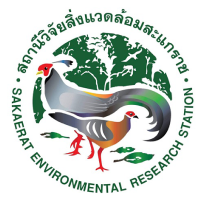Keywords :
Degraded Forest; Dipterocarp Forest; Herpetofaunal Survey; Human Disturbance; Passive Trapping; Southeast Asia
บทคัดย่อ :
With ongoing rapid anthropogenic deforestation and habitat degradation, it is critical that we understand the role of human-disturbed areas in conserving the biodiversity of the world. Despite intensive deforestation in Southeast Asia, there are few studies investigating faunal communities in human-modified landscapes there. We assessed herpetofauna in dry dipterocarp forest, disturbed forest, and Eucalyptus plantations in the Sakaerat Biosphere Reserve of Thailand. In May and June of 2015, we conducted surveys using 12 passive trapping arrays with funnel and pitfall traps. We captured 436 individuals representing 38 species, with 266 amphibians (13 species) and 170 reptiles (25 species). The Eucalyptus plantations and highly disturbed forest sites hosted higher amphibian abundance and richness than protected areas of dry dipterocarp forest. Reptile species richness did not differ between habitat types, but capture rates in the Eucalyptus plantations were significantly higher than in the dry dipterocarp forest. Funnel traps yielded significantly higher reptile capture rates than pitfall traps. For reptiles, the results support other studies, which have concluded that reptiles are less sensitive than amphibians to disturbance and possibly positively affected by human disturbance in some cases. The terrestrial amphibian abundance and species richness documented here indicate that disturbed habitats may provide suitable areas for these species.
เอกสารอ้างอิง :
Crane, M. S., Strine, C. T., Knierim, T. K., Artchawakom, T., & Suwanwaree, P. (2018a). Herpetofaunal Species Abundance, Richness, And Diversity in A Dry Tropical Forest and Agricultural Matrix at The Sakaerat Biosphere Reserve, Thailand. Herpetological Conservation and Biology, 13(3), 586-597.



